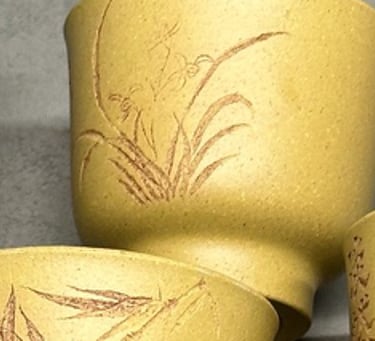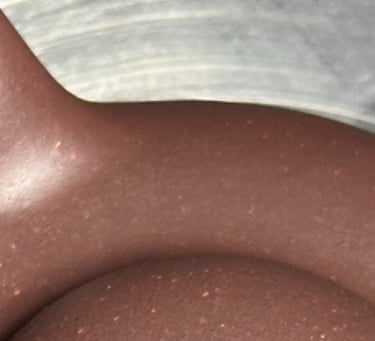Exploring the Application of Traditional Cultural Elements in Yixing Teapot Design
This blog explores how Yixing teapots incorporate traditional Chinese cultural elements, such as Confucianism, Daoism, and Zen Buddhism, into their design. It highlights the balance between functionality, cultural depth, and modern aesthetics, emphasizing the teapot's role in fostering cultural exchange and appreciation worldwide.
YIXING TEAPOTSCHINESE TEA CULTURE
Current Status of Yixing Teapot Design
Here’s the uncomfortable truth: while Yixing teapots have this incredible cultural heritage, modern designs often miss the mark.
Some artisans are prioritising functionality over cultural expression, and the results? Teapots that work but don’t speak. The intricate storytelling, symbolism, and thematic depth sometimes get lost in translation.
Another issue? Rigidity. Many contemporary designs play it too safe, sticking to repetitive forms instead of pushing creative boundaries while staying true to tradition.
Balancing practical use with cultural storytelling isn’t easy, but it’s crucial if Yixing teapots are to keep their cultural value alive.
Application of Traditional Cultural Elements in Yixing Teapot Design
So, how do we actually apply these cultural elements effectively?
Clear Storytelling Through Design: Every teapot should communicate its story at first glance—whether it’s through symbolic motifs, patterns, or texture.
Diverse Design Forms: Patterns, colour palettes, and shapes aren’t just aesthetic choices; they’re tools for cultural storytelling.
Authenticity Over Trends: Instead of chasing fleeting design trends, artisans should lean into the deep well of cultural symbolism that traditional elements offer.
Whether it’s a professional ceramic shop or a solo artisan, the key is to make sure every teapot doesn’t just look good but also feels meaningful.


Let’s be honest—when you hear Yixing teapot, what comes to mind? Is it just a fancy clay pot for brewing tea, or do you see it as a masterpiece of Chinese craftsmanship? Either way, there’s more to these teapots than meets the eye.
The Yixing teapot isn’t just about brewing tea—it’s about culture, philosophy, and centuries of tradition moulded into clay. But here’s the thing: while the cultural depth is undeniable, modern designs sometimes fall short. So, how do we preserve and celebrate those traditional elements without losing relevance in today’s world? That’s exactly what we’ll unpack here.
The Role of Traditional Cultural Elements in Yixing Teapot Design
Influence of Chinese Traditional Culture on Yixing Teapot Design
Chinese philosophy has left an indelible mark on Yixing teapot design—and I’m not just talking about aesthetics. Ideologies like Confucianism, Daoism, and Zen Buddhism have shaped every curve, texture, and pattern.
Confucianism: It’s all about respect for life and human dignity. This translates into designs that feel purposeful, almost as if they’re paying respect to the tea-drinking ritual itself.
Daoism: Harmony with nature takes centre stage. Natural materials, organic forms, and simplicity dominate the design philosophy.
Zen Buddhism: Think mindfulness and minimalism. The quiet elegance of a Yixing teapot reflects the same peaceful spirit found in Zen teachings.
These aren’t just ‘design inspirations’; they’re cultural roots that make every teapot a reflection of centuries-old wisdom.


Conclusion
At the end of the day, a Yixing teapot isn’t just a high-end tea set—it’s a bridge to Chinese culture. From Confucianism to Zen Buddhism, every design carries a philosophy, every curve tells a story.
To stay relevant globally, Yixing teapots need to strike that delicate balance: stay deeply rooted in tradition while embracing thoughtful innovation.
Because when done right, a Yixing teapot isn’t just about tea—it’s about timeless craftsmanship, cultural exchange, and a quiet nod to the wisdom of the past.
FAQs
1. What makes Yixing teapots special?
Yixing teapots are crafted from unique clay and embody centuries of Chinese cultural and philosophical values.
2. How does traditional Chinese culture influence Yixing teapot design?
Philosophies like Confucianism, Daoism, and Zen Buddhism play a significant role in shaping the aesthetics and purpose of these teapots.
3. Why are modern Yixing teapot designs criticised?
Many modern designs prioritise functionality over cultural depth, often losing the storytelling aspect that makes these teapots special.
4. How can traditional elements be preserved in Yixing teapot design?
Through thoughtful storytelling, diverse design techniques, and staying true to authentic cultural themes.
In short, Yixing teapots are more than clay—they’re cultural vessels waiting to share their story with the world.
